Introduction
At the 2023 Sustainable Aviation Futures Congress, industry leaders, experts, and stakeholders gathered to discuss the future of sustainable aviation fuel (SAF) and its potential to revolutionize air travel. Despite its potential, only 0.1% of flights currently use SAF, highlighting the need for further adoption. The event showcased the progress made by trailblazers like Virgin Atlantic, which recently powered a flight entirely with SAF, setting a high standard for operational excellence and sustainability.
Stakeholders from Europe, the US, and the Middle East shared insights on scaling SAF and discussed critical financial and policy mechanisms to foster its adoption. The congress served as a catalyst for continued dialogue and action, propelling the aviation industry towards a more sustainable trajectory. With a deep understanding of the renewable fuels industry, this article explores key insights from industry leaders, technological advancements, government policies, and the economic feasibility of SAF.
It also highlights the market drivers and challenges for SAF adoption, as well as the future outlook and projections for its utilization. The path to a greener aviation industry requires collaboration, innovation, and a collective commitment to sustainable practices.
Conference Overview: Sustainable Aviation Futures Congress
At the forefront of the 2023 Sustainable Aviation Futures Congress, industry leaders, experts, and stakeholders convened to discuss the evolution and hurdles of sustainable aviation fuel (SAF). This forum enabled a deep dive into the innovative strides and collaborative opportunities within sustainable aviation. Notably, the event underscored the current reality where a mere 0.1% of flights utilize SAF, despite its potential to revolutionize air travel by enabling planes to fly long distances with significantly reduced carbon footprints.
The congress highlighted the significant progress made by trailblazers such as Virgin Atlantic, which exemplifies the industry's commitment to a greener future. Virgin Atlantic's achievements in customer service excellence and expansion to new destinations, alongside its joint venture partners, have set a high bar for operational excellence. Moreover, the airline's proactive stance on sustainability, as evidenced by its latest feat of powering a flight entirely with SAF, marks a historic step towards the aviation industry's goal of net-zero carbon emissions.
This case study reflects on the insights shared during the congress, with stakeholders from Europe, the US, and the Middle East providing their expertise on how to scale SAF. Critical financial and policy mechanisms were discussed to foster a conducive environment for SAF adoption. The event also featured a pioneering statement from Virgin Atlantic's founder, Sir Richard Branson, emphasizing the importance of innovation and perseverance in overcoming the challenges of decarbonizing long-haul flights.
The UK Transport Secretary echoed this sentiment, celebrating the historic flight as a testament to the potential for aviation to align with global decarbonization goals.
In sum, the congress served as a catalyst for continued dialogue and action, propelling the aviation industry towards a more sustainable trajectory, with SAF at the helm of this transformative journey.
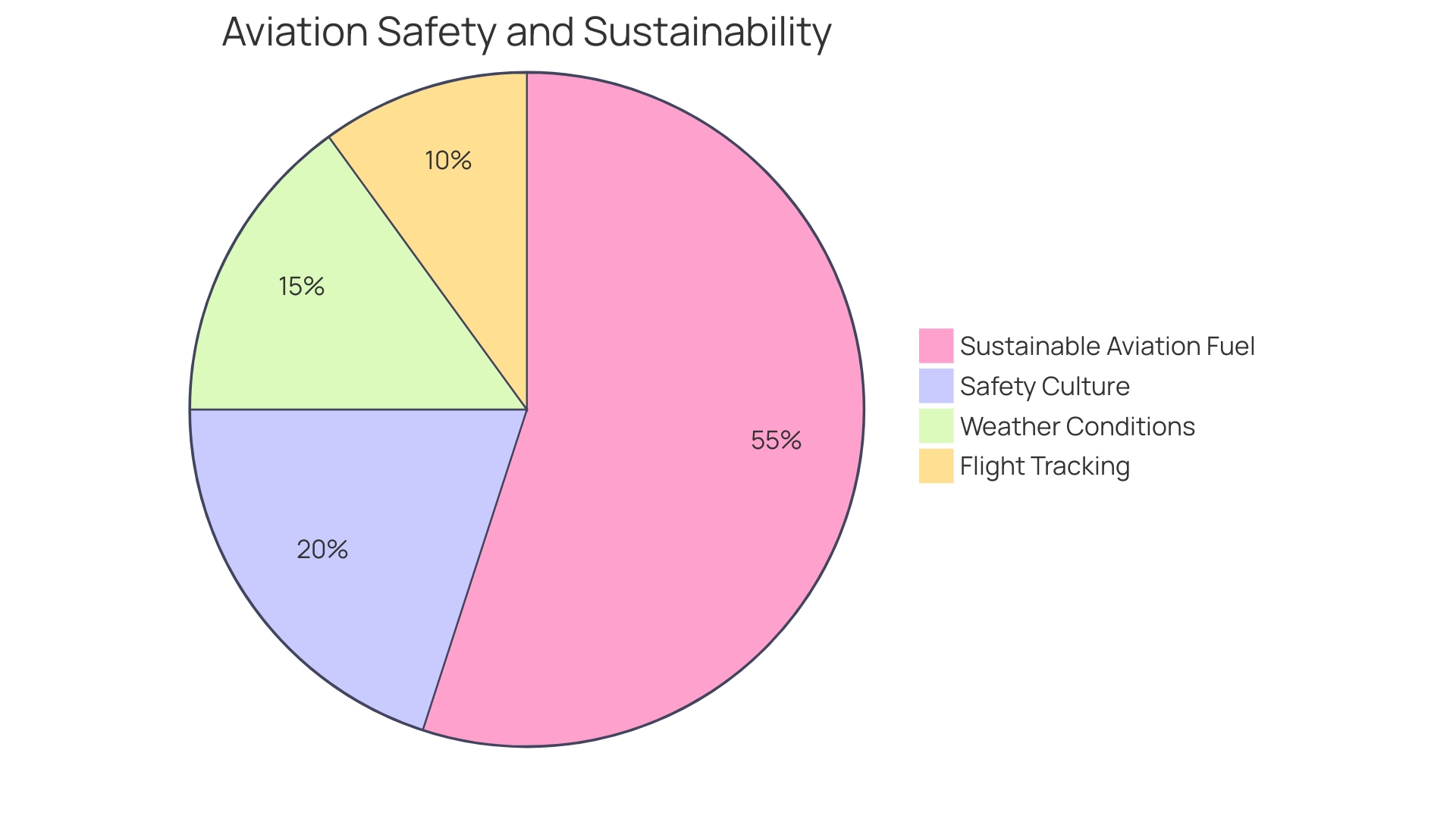
Key Insights from Industry Leaders
At the forefront of the Sustainable Aviation Futures Congress, leading voices within the aviation industry convened to discuss the pivotal role of sustainable aviation fuel (SAF) in driving the sector towards a greener horizon. They underscored the necessity of forging strong partnerships across governmental bodies, the private sector, and academic institutions to expedite the development and uptake of SAF. This multifaceted approach involves bolstering research initiatives, advocating for supportive policies, and fostering financial investments to address the inherent challenges of escalating SAF production and its widespread adoption.
The discourse further delved into the misconception surrounding SAF and its potential, highlighting the need to demystify its applications and benefits. For instance, Saf's capacity to be produced from a multitude of renewable sources, including used cooking oil, was noted, with some users humorously remarking on its 'french fries' scent. Such conversations are crucial in educating the public about Saf's significant contribution to the industry's goal of achieving net zero emissions.
In the realm of innovation and collaboration, the partnership between Airbus and Neste exemplifies the industry's commitment to decarbonization. Their joint efforts are centered on reducing aviation's carbon footprint, reinforcing the narrative that collective action is imperative in confronting the challenges posed by global warming and climate change.
Recent developments in the industry include Virgin Atlantic's recognition as Britain's only Global Five Star Airline, signaling the airline's ongoing dedication to innovation and customer service. Their expanded transatlantic network, in collaboration with Delta Air Lines, reflects the broader industry's commitment to sustainability, as evidenced by the milestone flight that champions the move towards net zero carbon emissions.
Canada's foray into SAF showcases the global effort to create sustainable energy alternatives, with the federal government and the Canada Infrastructure Bank collectively investing $6.2 million to champion SAF initiatives in Manitoba. This investment is a testament to the country's dedication to becoming a leader in clean energy within a net-zero future.
The sustainable aviation fuel industry is gaining traction, with public and private sectors aligning to scale up production. As the US aviation sector stands as a significant contributor to transportation emissions, the urgency to decarbonize becomes more pronounced. With commercial aircraft having an operational lifespan of 20 to 30 years, the transition to SAF is pivotal in meeting the increasing demands of air travel and air freight without exacerbating the sector's carbon footprint.
Environmental impacts associated with aviation are substantial, with the industry responsible for an estimated 3.5 percent of anthropogenic changes to the Earth's energy balance. The challenges are manifold, from CO2 emissions doubling since the mid-1980s to the contribution of non-CO2 factors like nitrogen oxides and contrails. The quest for sustainability in aviation, therefore, is not just about reducing carbon emissions but also about addressing the wider environmental implications.
In synthesis, the key insights from the congress and the latest industry news converge on a singular vision: the need for a concerted, global effort to embrace SAF and other sustainable practices. This unifying goal is pivotal in ensuring that the aviation industry not only thrives but does so responsibly, in harmony with the planet's ecological boundaries.
Graham Provost on CORYS and Simulation in SAF
Graham Provost, an authority in simulation technologies, delivered a standout presentation at the 2023 Sustainable Aviation Futures Congress. His discourse centered around CORYS, a simulation powerhouse pivotal in refining sustainable aviation fuel (SAF) usage. Highlighting simulation's role, he expounded on its capacity to assess SAF's influence on aircraft efficacy, emissions mitigation, and broader sustainability objectives.
The importance of simulation technology cannot be overstated, as it provides critical insights into Saf's interaction with current jet engine designs—vital for an industry that hasn't seen significant changes in jet fuel properties since the 1950s. Considering the aviation sector's safety-centric culture, the simulation offers a risk-free environment to test and validate the performance of SAF, ensuring compliance with stringent safety standards. Robert McCormick from the National Renewable Energy Laboratory emphasizes the novelty of this endeavor, likening the design of a new jet fuel to a groundbreaking concept for the industry.
Despite the fact that only 0.1% of flights currently utilize SAF, there's a burgeoning impetus from both public and private sectors to boost its production and application. The challenge is nontrivial; planes must carry substantial volumes of SAF to support long-haul flights, underscoring the need for simulations like those conducted by CORYS. These simulations are crucial for the industry to overcome the steep learning curve associated with integrating a fundamentally new kind of jet fuel into a fleet built on seven decades of consistency.
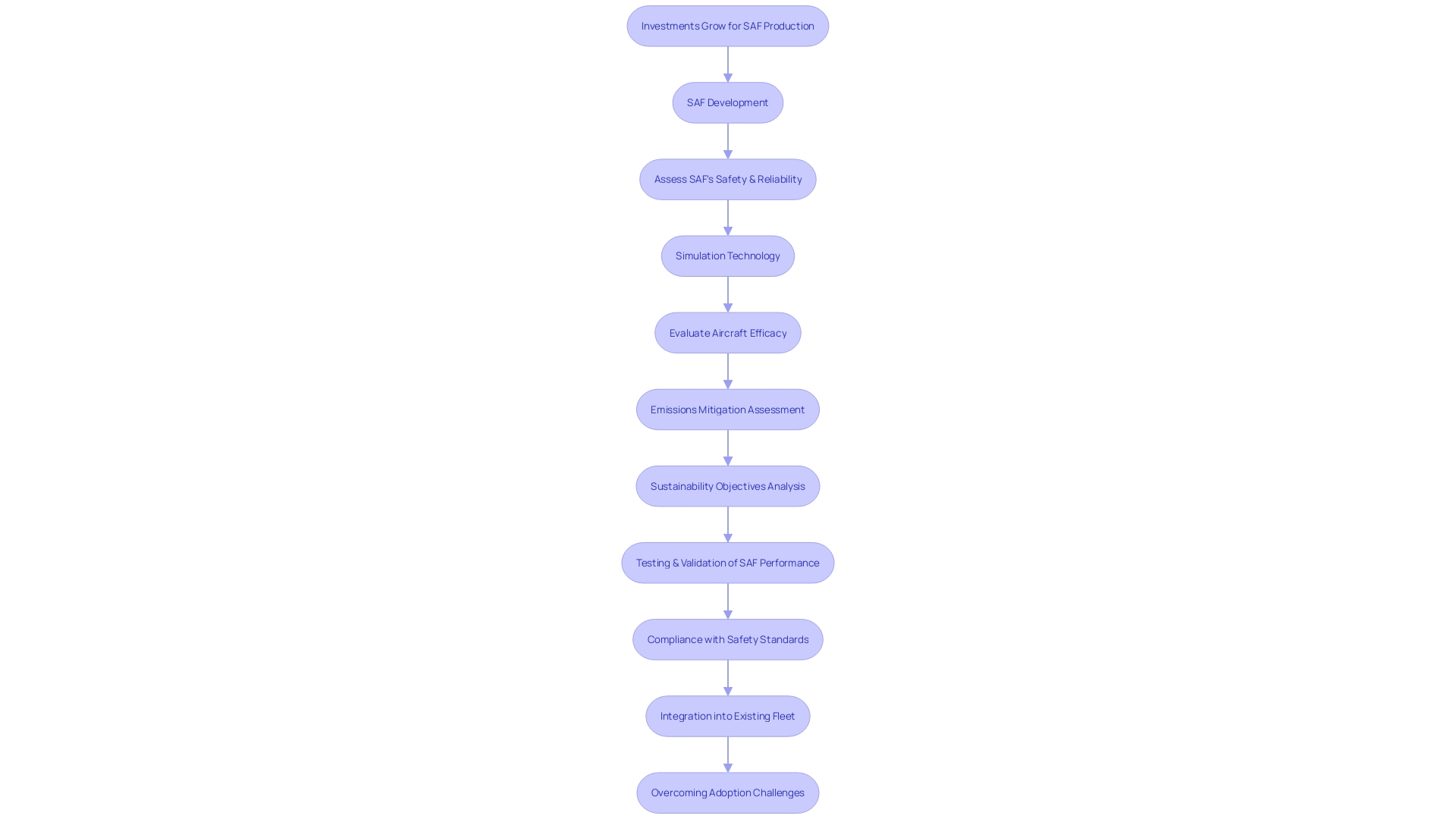
Ivor van Dartel on VÆRIDION's Electric Microliner
At the forefront of the Sustainable Aviation Futures Congress in 2023, Ivor van Dartel, CEO of VISION, unveiled the company's electric microliner, marking a significant stride in sustainable aviation technology. The electric microliner emerges as a game-changer for short-haul flights by offering a carbon-neutral travel option, aiming to reduce the aviation industry's carbon footprint. With the aviation sector responsible for about 2.5 percent of global CO2 emissions, innovations like the electric microliner could be instrumental in mitigating environmental impacts.
The electric microliner is not just a technological breakthrough; it embodies the shift towards Mobility as a Service (MaaS). Martin Winther Andersen, Co-founder and CEO of Copenhagen Helicopter, envisions the microliner as a crucial component in building a network of Mobility as a Service, redefining personal transport. The MaaS model proposes a transition from personal vehicle ownership to mobility solutions that are accessible on-demand.
The microliner's ability to operate from smaller airfields, previously rendered obsolete due to the increasing size of aircraft, paves the way for a revitalized network of domestic routes.
Furthermore, this innovation in regional aviation sparks a new kind of symbiosis between start-ups like VÃRIDION and emerging aircraft manufacturers, fostering collaborative efforts that extend beyond the two entities. For instance, VÃRIDION's recent partnership with Helsinki East Aerodrome exemplifies the growing number of 'partner airports' across Europe, which are essential to the microliner's operational model.
The significance of such advancements is punctuated by the evolving regulatory landscape, with the FAA revising certification requirements for Light Sports Aircraft (LSA). These amendments are set to accommodate the burgeoning Advanced Air Mobility sector, including all-electric alternatives, thereby catalyzing the integration of green aircraft into mainstream aviation.
Amidst the green transition, the microliner stands as a testament to what's possible with current technology, boasting lower costs, reduced infrastructure demands, and a simplified architecture. It represents an essential piece in the digital transformation of the industry, offering a glimpse into an electrified future for aviation that aligns with sustainability goals. The advent of the microliner signals a pivotal era in aviation history, one that could potentially lead to a significant reduction in the environmental impacts of air travel, as evidenced by studies on electric aircraft like the pipistrel Alpha electro.
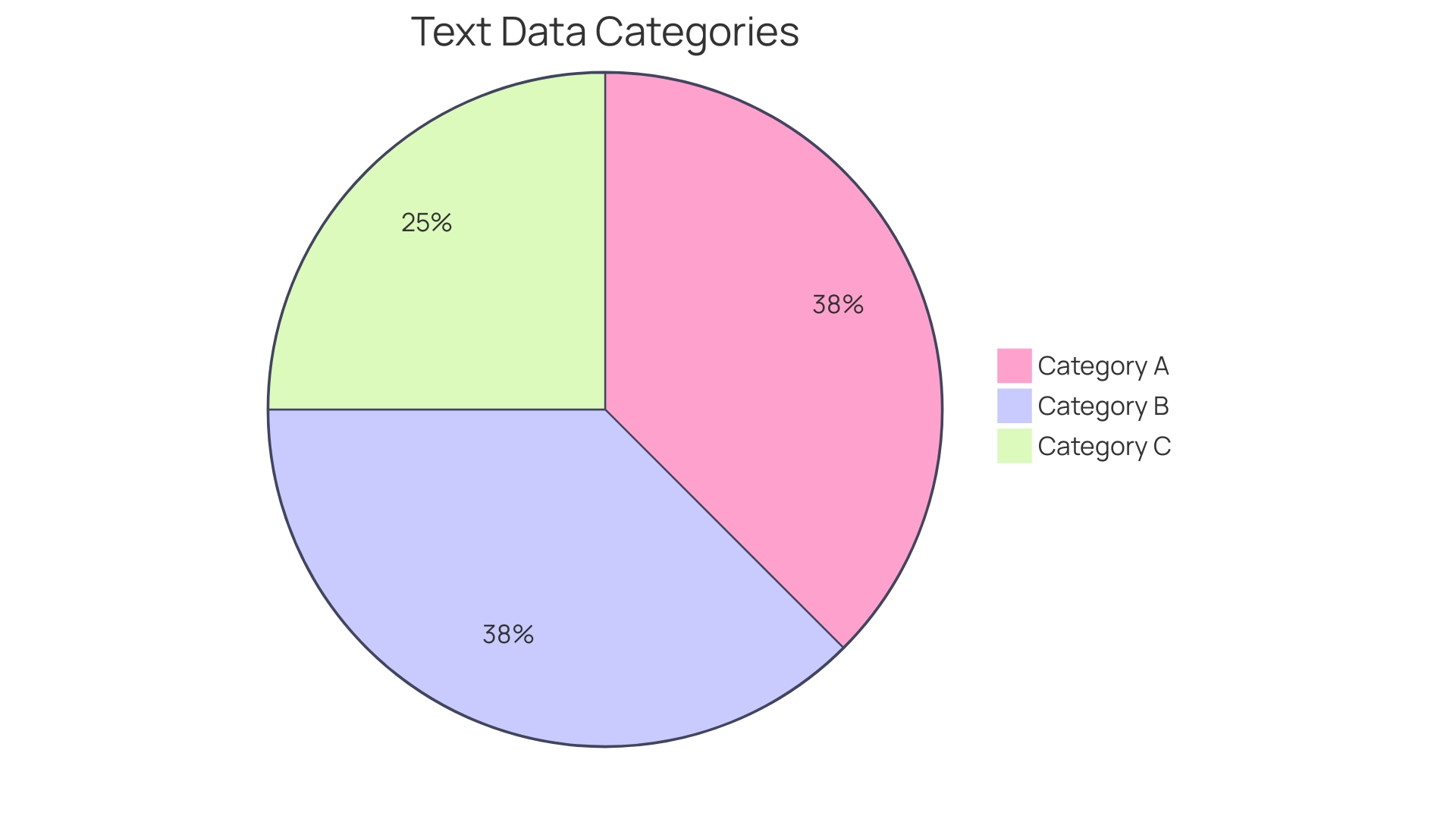
Sarah Wilkin on Fly Green Alliance and SAF Development
Fly Green Alliance's Sarah Wilkin has been at the forefront of addressing the aviation industry's sustainability challenges, specifically the development and adoption of sustainable aviation fuel (SAF). Her efforts underscore the necessity of education to correct widespread misconceptions about SAF. While some may whimsically associate SAF with the scent of French fries due to its potential sources like used cooking oil, the reality is its critical role in enabling the aviation sector to progress towards net-zero emissions.
Through strategic partnerships, such as the collaboration between Delta Air Lines and Fly Green Alliance, the industry is actively pursuing the integration of SAF into regular use. Delta's Chief Sustainability Officer, Amelia DeLuca, emphasizes the airline's commitment to replacing 10% of its annual 4 billion gallons of jet fuel with SAF by 2030 while simultaneously reducing its total fuel consumption. This aligns with the International Civil Aviation Organization's pledge to achieve net-zero emissions across global air transport by 2050.
With the aviation sector contributing approximately 2% to global CO2 emissions, the transition to SAF is a crucial step toward decarbonization. Notably, SAF can be readily utilized within existing aircraft engines and fuel infrastructures, offering a 'drop-in' solution that doesn't require extensive modifications. As industry leaders like Delta, Airbus, and Neste forge partnerships to tackle climate change, the momentum for SAF grows, illustrated by Virgin Atlantic's landmark transatlantic flight using this cleaner fuel alternative.
The journey to a greener aviation industry is underpinned by innovative partnerships and a collective commitment to education, innovation, and sustainable practices.
Alessandra Tedeschi on ClimaOP and On-Ground Emissions Reduction
Environmental scientist Alessandra Tedeschi's exploration into ClimaOP technology has unearthed a pivotal advancement in the realm of aviation sustainability. With a focus on mitigating ground-level emissions, which are often overshadowed by in-flight emissions yet equally crucial, Tedeschi's case study reveals the profound impact such innovations can have on the industry's carbon footprint. Clima represents a stride toward achieving net-zero emissions, a state wherein greenhouse gases released are balanced by those removed from the atmosphere.
This technology aligns with the broader industry's efforts, including those by American Airlines, which has partnered with a startup to invest in cost-effective carbon removal, and the remarkable transformation of Finland's regional airports that have nearly eradicated their carbon emissions by transitioning to renewable energy sources.
The urgency to address aviation emissions has been underscored by the pervading action gap in international climate policy, as evidenced at COP 27. Despite the recognition of the climate crisis's severity, substantial action remains elusive. Climaco's breakthrough, along with the United States' Aviation Climate Action Plan, which aims for net-zero emissions by 2050 and has already invested significantly in cleaner technology and research, exemplifies the kind of decisive steps needed to close this gap.
Furthermore, the case study accentuates the importance of viewing sustainability through a comprehensive lens, considering all emission scopes. For instance, achieving net zero at airports not only involves operational emissions (Scope 1 and 2) but also extends to third-party emissions (Scope 3) linked to airport activities. This holistic approach is vital for aligning with the Paris Agreement's objectives and propelling the aviation industry toward a sustainable future.
The implications of this study are clear: while the path to sustainability in aviation is complex and laden with technological challenges, innovations like ClimaOP, alongside strategic partnerships and industry-wide commitments, are essential in curbing the environmental impact of air travel. These initiatives, though nascent, demonstrate that with the right investment and focus, meaningful progress can be made towards a greener aviation sector.
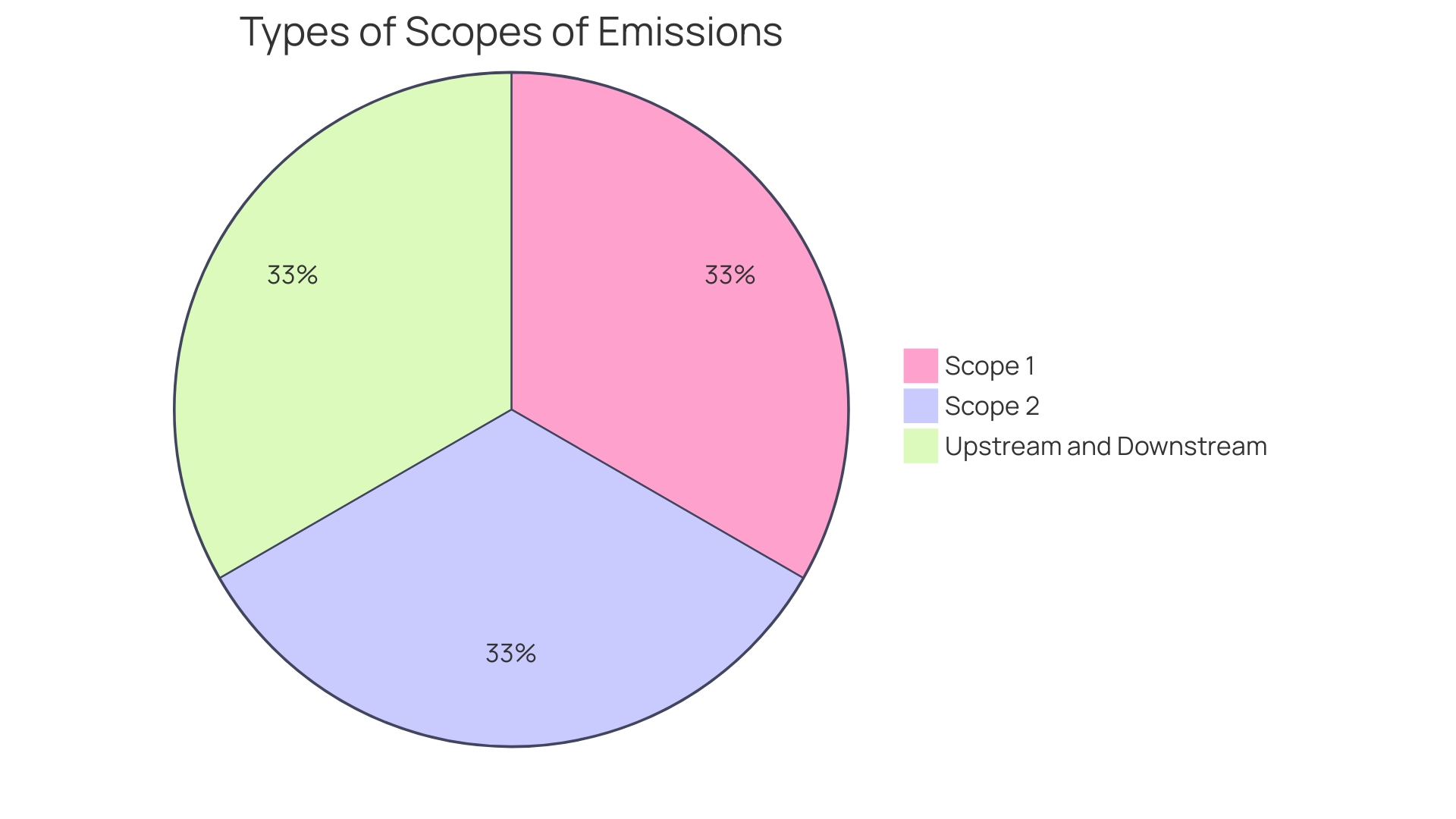
Patrick Le Clercq on Alternative Fuels at DLR
The German Aerospace Center (DLR) has been at the forefront of exploring sustainable solutions to aviation's environmental challenges. Patrick Le Clercq, a DLR researcher, presented the latest advancements in alternative aviation fuels at the 2023 Sustainable Aviation Futures Congress. His talk shed light on the research into new fuel sources that are compatible with current aircraft engines, emphasizing the role of alternative fuels in achieving aviation sustainability.
Recently, a landmark event showcased the practical application of these research efforts: Virgin Atlantic's first transatlantic flight powered solely by alternative fuels. The flight from London to New York marked a significant step towards reducing aviation's carbon footprint. Although conducted without fare-paying passengers and as a one-time event, it underscored the industry's commitment to greener operations.
The successful flight was made possible by collaborations such as the partnership between Airbus and Neste, which focuses on decarbonizing the industry. Neste Impact, a solution designed to help companies achieve sustainability targets, is a testament to the industry's drive towards credible emission reductions.
The importance of such advancements cannot be overstated. Commercial aviation is responsible for about 3.5 percent of anthropogenic climate alterations, with a mix of CO2 and non-CO2 emissions like NOx and contrails contributing to this impact. The urgency is highlighted by the fact that CO2 emissions from aviation have doubled since the mid-1980s and could constitute a significant portion of the CO2 budget if warming is to be limited to 1.5°C.
DLR's research efforts, coupled with pioneering flights and industry partnerships, offer hope for a sustainable transition. However, the path forward involves not just developing alternative fuels but also scaling up their production and addressing the challenges of supply and technology to meet stringent emissions targets.
Market Drivers and Challenges for SAF Adoption
Sustainable aviation fuel (SAF) represents a significant step toward greener travel, offering an alternative to conventional jet fuel that doesn't contribute additional greenhouse gases to the atmosphere. SAF is crafted from renewable waste and residue materials, such as used cooking oils and animal fats, rather than crude oil. Utilizing these renewable sources, SAF can be seamlessly integrated with current aircraft engines and refueling infrastructure.
The aviation industry, including airlines like Delta Air Lines, has set ambitious targets to incorporate SAF into their operations, aiming to replace a substantial portion of traditional jet fuel with SAF by the end of the decade.
The journey to net-zero emissions by 2050, as embarked upon by the aviation sector, is laden with both market drivers and challenges. On the one hand, environmental regulations, corporate sustainability objectives, and a rising consumer demand for sustainable travel options are propelling the industry forward. On the other hand, the availability of feedstocks for SAF production, scalability of production processes, and achieving cost competitiveness with traditional fuels are significant hurdles.
According to Amelia DeLuca, Delta's Chief Sustainability Officer, approximately 90% of the aviation industry's carbon emissions stem from jet fuel. Therefore, focusing on the type of fuel and its consumption is critical to the industry's sustainability efforts. DeLuca emphasizes the importance of education in overcoming misconceptions about SAF, noting that while some consumers humorously associate SAF with the smell of French fries due to its potential feedstocks, its role in propelling the industry toward net-zero is far from trivial.
The aviation industry's environmental impact is considerable, with commercial aviation accounting for about 3.5 percent of human-made changes to the Earth's energy balance. CO2 emissions from aviation have doubled since the mid-1980s, and without intervention, they could consume a quarter of the CO2 budget to limit global warming to 1.5°C by 2050.
Market trends signal a robust effort toward sustainable aviation, with companies like Aemetis Inc. and Alder Fuels leading the way in producing high-quality, low-carbon transportation fuels. These organizations are pioneering the development of SAF through patented technologies and innovative approaches, aiming to reduce aviation's carbon footprint and align with rigorous industry standards.
The transition to SAF is currently limited, with only 0.1% of flights using these fuels. However, industry leaders and new startups are innovating to scale SAF production, making it a more viable and cost-effective option. As the demand for air travel and air freight continues to grow, the urgency for solutions like SAF that can be rapidly implemented and scaled becomes increasingly critical.
Government Policies and Incentives for SAF
The push for a more sustainable aviation industry is gaining momentum, with government policies and incentives at the forefront of this transformative shift. The recently established ReFuelEU Aviation initiative, which is part of the 'Fit for 55' package, exemplifies such efforts. It sets an ambitious target for the EU to reduce greenhouse gas emissions by at least 55% by 2030, aiming for climate neutrality by 2050.
A provisional political agreement on this initiative was reached on 25 April 2023, showcasing a commitment to decarbonize air transport.
In the United States, the Aviation Climate Action Plan has charted a course toward net-zero emissions by 2050. The Federal Aviation Administration (FAA) has infused over $230 million into the development of technologies to reduce fuel, emissions, and noise, in addition to deploying software to optimize taxiing times, thus conserving fuel. Moreover, significant investments have been made in research to better understand aviation's environmental impacts and discover cost-effective solutions.
Washington state has emerged as a leader in promoting sustainable aviation fuels (SAF), recognizing that not all SAFs are created equal. The state emphasizes the need for truly sustainable options that don't exacerbate deforestation or pollution. With the right policy incentives, the production of SAF from diverse sources, such as used cooking oil, forestry residues, or even synthetic e-fuels, becomes more feasible.
This fosters innovation and positions entrepreneurs to tackle the challenge of developing cleaner fuels.
The viability of SAF is underscored by the fact that the aviation sector is a significant and growing source of U.S. transportation emissions. Given the longevity of commercial aircraft, typically 20 to 30 years, a shift to SAF offers a practical pathway to decarbonization, especially since the electrification of long-haul flights remains uncertain.
To ensure the success of the SAF industry, strategic biomass production is essential. This entails understanding the co-benefits and trade-offs of different feedstocks and establishing processing facilities in strategic locations to minimize transport and infrastructure costs. Such planning is crucial in regions like the Great Lakes and the Rocky Mountains, where efforts are underway to usher in a new era of clean aviation.
Challenges, however, persist. For instance, models used to estimate airline emissions must adequately account for indirect land-use change emissions. The diversion of farmland for biofuel production can lead to deforestation and reduced carbon storage, which are often underestimated in projections.
Despite the complexities, there is optimism. A transatlantic flight powered by fat and sugar has already demonstrated Saf's potential. With concerted efforts among governments, industry stakeholders, and innovators, the widespread adoption of SAF could redefine the future of air travel, aligning it with environmental sustainability goals.
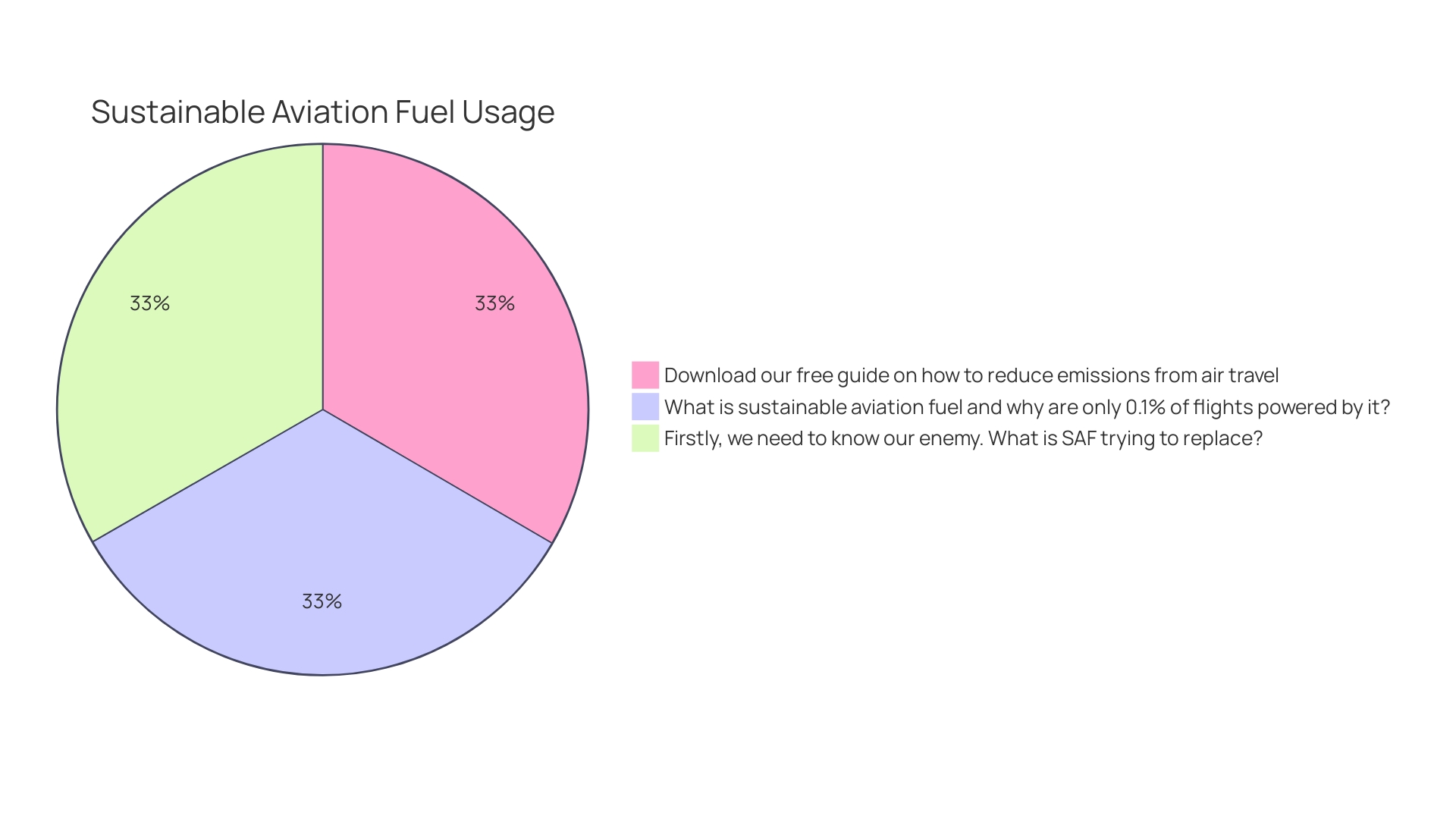
Economic Feasibility and Cost Implications of SAF
Sustainable aviation fuel (SAF) stands as a pivotal element in the aviation sector's quest for carbon neutrality by 2050. However, the path to integrating SAF into mainstream use is laden with economic considerations. Presently, merely 0.1% of flights utilize SAF, largely due to its scarcity and the substantial cost disparity compared to conventional jet fuel.
Scaling production is essential, as evidenced by the US Department of Energy's commitment to a 3 billion gallon annual output by 2030, aiming for 35 billion gallons by 2050. Achieving this will require extensive cultivation of low-input, sustainable biomass feedstocks.
Strategies to offset the high costs of SAF include capitalizing on economies of scale and advancing relevant technologies. Furthermore, the aviation industry must navigate the challenge of requiring large volumes of SAF to power long-haul flights, necessitating a considerable production expansion. The criticality of producing biomass responsibly entails understanding the co-benefits and trade-offs of different feedstocks, with strategic placement of processing facilities to minimize transport and infrastructure expenses.
The economic landscape of SAF is also shaped by government incentives, which may alleviate financial burdens and spur industry growth. As air travel demands surge, with the US aviation sector being a significant contributor to transportation emissions, the transition to SAF becomes ever more urgent. Despite the current hurdles, optimizing the cost-effectiveness of SAF is crucial for accelerating the aviation industry's sustainable transformation.
Technological Advancements in SAF Production
Advancements in sustainable aviation fuel (SAF) production are pivotal for the aviation industry's shift towards environmental sustainability. Innovations in this field are shaping the future of air travel, with groundbreaking developments in biofuel refineries, synthetic fuel production, and the cultivation of sustainable feedstocks. A prime example is the LanzaJet Freedom Pines Fuels facility, the first of its kind to convert ethanol into SAF, representing a significant leap towards decarbonized aviation.
Moreover, partnerships like those between Neste and Airbus are driving forward the decarbonization of aviation. Neste's commitment to sustainably sourced raw materials for SAF production, coupled with third-party sustainability audits, demonstrates the industry's dedication to environmental responsibility. This meticulous process ensures that SAF meets stringent sustainability standards, as evidenced by their adherence to the CORSIA methodology, which is pivotal for the industry's aim to achieve net zero carbon emissions.
One of the most notable milestones in the industry was the Virgin Atlantic flight, underscoring the immense potential of SAF in making aviation climate-neutral. As companies like Yokogawa contribute to the optimization of production and the supply chain through digital technologies, the aviation sector inches closer to its sustainability goals.
However, the use of SAF is not without its challenges. Despite its ability to reduce carbon intensity by over 80%, Saf's current global fuel share is less than 0.1%. The bottlenecks are due to limited supply, fragmented demand, and cost constraints.
Furthermore, the industry must not overlook non-CO2 impacts, such as contrail cirrus formations, which have a significant warming effect.
The recent agreement signed at the National Aviation Conference to establish production capacities for eSAF in East Germany exemplifies the collective effort to address these challenges. This strategic move not only positions Germany as a leader in innovative technologies but also ensures the availability of sustainable fuels for the future, significantly contributing to the reduction of CO2 emissions within the German aviation sector.
In the context of sustainability, the aviation industry is not just focusing on immediate gains through modern, fuel-efficient aircraft but is also looking ahead. Continuous research and development in SAF are imperative for optimizing production processes and minimizing the environmental footprint, thereby unlocking the full potential of sustainable aviation fuel for a greener future.
Key Industry Players in the SAF Market
Key players in the sustainable aviation fuel (SAF) market are not only propelling the industry forward but are also crucial in the shift towards carbon-neutral air travel. Companies like Nestle are at the forefront, producing Nestle MY Sustainable Aviation Fuel, derived from sustainably sourced raw materials. Their commitment to sustainability is evidenced by regular third-party audits which ensure compliance with rigorous standards.
Partnerships, such as the one between Airbus and Neste, highlight the collaborative efforts necessary to decarbonize aviation; their pioneering work serves as a testament to industry-wide dedication to environmental responsibility.
Airlines, too, are embracing this eco-friendly transition. Virgin Atlantic, recognized for its innovation and customer service, has made significant strides in sustainability. As part of an expanded joint venture with Delta Air Lines and Air France-KLM, Virgin Atlantic is improving access to SAF, thereby reducing CO2 emissions across its extensive route network.
Furthermore, in Germany, a new initiative has been launched to establish production capacities for eSAF with the goal of making aviation climate-neutral by the mid-21st century.
Research institutions and industry alliances are also playing a pivotal role. They are not only addressing the technological challenges but are fostering an environment where SAF can be scaled up effectively. Reports and challenges, such as the Sustainable Aviation Innovation Challenge by UpLink and the First Movers Coalition, identify and accelerate promising start-ups in the sector, showcasing the opportunities for innovation within the industry.
These collective efforts represent the aviation industry's commitment to a major milestone: achieving net zero carbon emissions. The journey is complex and requires a multifaceted approach involving technological innovations, strategic partnerships, and persistent commitment to sustainability targets.
Future Outlook and Projections for SAF Utilization
The ascent of sustainable aviation fuel (SAF) is a key development in the quest to mitigate the environmental impact of air travel. With the aviation sector accounting for approximately 2% of global carbon emissions, the impetus to transition away from fossil fuels is pronounced. SAF presents a pragmatic alternative, derived from sources such as fats, sugars, and even waste materials, underscoring an innovative approach to decarbonizing the skies.
Recent milestones, such as transatlantic flights powered by blends of SAF, signal a transformative era for the industry. Despite Saf's current usage on a mere fraction of flights, significant advancements and collaborations, like the Airbus and Neste partnership, aim to amplify its application. However, scaling up SAF production is critical, considering the robust longevity of commercial aircraft, which can span 20 to 30 years.
This extended service life indicates that fleet renewal alone won't suffice to rapidly curtail emissions.
The U.S. aviation sector, as the third-largest emitter of transportation-related emissions in the country, is projected to grow, further emphasizing the urgency for solutions like SAF. As airlines, including American, Delta, and United, strive toward net-zero carbon emissions by 2050, Saf's role becomes increasingly indispensable. Despite the challenges in completely electrifying aircraft, particularly for long-haul flights, SAF can serve as the most feasible option for near-term decarbonization.
Experts within the industry, such as commercial pilot and aviation writer Chris, recognize the complexity of transitioning to SAF but also the necessity of it. As flight tracking services like Flightradar24 continue to enhance visibility into aviation operations, the focus on sustainability remains paramount. The journey towards a greener future in aviation is not without its obstacles, but with sustained commitment and innovation, SAF could very well pave the way for a more sustainable industry.
Conclusion
The 2023 Sustainable Aviation Futures Congress served as a catalyst for the aviation industry's transition towards a more sustainable trajectory. Key insights highlighted the pivotal role of sustainable aviation fuel (SAF) in driving the sector towards a greener future. Collaboration, innovation, and a collective commitment to sustainable practices were emphasized as essential for achieving this goal.
Industry leaders stressed the need for strong partnerships across governmental bodies, the private sector, and academic institutions to expedite SAF development and adoption. Technological advancements, such as simulation technologies and electric microliners, are shaping the future of SAF.
Government policies and incentives, such as the ReFuelEU Aviation initiative in the EU and the Aviation Climate Action Plan in the US, play a vital role in promoting SAF adoption. Economic feasibility and cost implications are significant considerations, with strategies like scaling up production and advancing technologies being explored.
Despite challenges like limited supply and non-CO2 impacts, market trends signal a robust effort towards sustainable aviation, with companies pioneering the production of low-carbon transportation fuels.
Looking ahead, the future outlook for SAF utilization is promising. Scaling up production is critical, given the longevity of commercial aircraft. The urgency for solutions like SAF is emphasized by the projected growth of the US aviation sector and the industry's commitment to achieving net-zero carbon emissions by 2050.
In conclusion, the aviation industry's transition towards sustainability requires collaboration, innovation, and a collective commitment to sustainable practices. SAF, along with technological advancements, government policies, and economic feasibility, plays a pivotal role in achieving a greener future for air travel. Continued efforts and investment in SAF have the potential to revolutionize the aviation industry and align it with global decarbonization goals.




